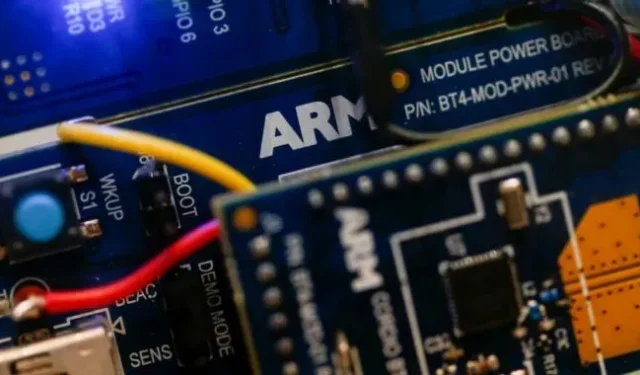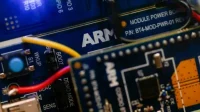When Masayoshi Son tried to convince investors to buy one of the world’s most successful chip companies in 2016, the SoftBank CEO had one clear message: “I think Arm will be the champion in the IoT era.”
But the concept of connecting billions of household and industrial devices to the Internet has been far slower than expected.
Son’s ambition to capture the Internet of Things (IoT) chip design market was the first bet he made on Arm that didn’t pay off. The second was a $66 billion sale to Nvidia that fell through last week.
Arm remains the dominant player in smartphone chips, which are still the most pervasive form of computing, but their growth has slowed significantly in recent years. Ahead of an initial public offering that could take place as early as this year, the company is rushing to strengthen its foothold in new markets it has so far underexploited while trying to raise profits to attract a new group of investors.
René Haas, incoming chief executive of Arm, told the Financial Times that his products are now “much more competitive”in data centers and cars than when SoftBank bought the Cambridge-based company.
“Making compromises about where to invest and where not to invest…these are compromises that public companies and even private companies have to make every day,” he said. “The company is in great shape.”
When Son led the $31 billion purchase of Arm, he saw it as a bet on the future of the entire tech industry, which at the time was crystallizing around the IoT concept. He continued to firmly push the executive team to develop chips for future machine connectivity.
Five and a half years later, it is becoming increasingly clear that the IoT gamble was a costly gamble. What’s more, it distracted Arm from attacking Intel’s dominance in the much larger data center market.
As Son’s vision collided with reality, SoftBank quietly revised its market calculations. A 2018 presentation predicts that the IoT controller market will be worth $24 billion by 2026, while the server market will be worth $22 billion.
But a similar 2020 presentation predicted that the IoT chip market would reach just $16 billion by 2029, while the server market, in which Arm had so far captured only a 5 percent share, would reach $32 billion. The Japanese technology group also revised its IoT market value estimate from $7 billion in 2017 to $4 billion in 2019.
Tudor Brown, who co-founded Arm in 1990 and ran the company for 22 years, called its massive investment in IoT “weird”given that “there will never be money in this market.”He added, “By focusing on that, they didn’t focus on the top prize, which was the server.”
In Arm’s December regulatory filings, the company made a strong case against an IPO and in favor of selling Nvidia, pointing out how shareholder pressure could prevent the company from investing in data center and PC markets that “have been hard to recoup.”crack”and where he made only “limited incursions”. Arm added that public market investors will “demand profitability and productivity,”meaning cut costs and a lack of financial firepower to invest in innovative new ventures.
“We always felt that the acquisition of Nvidia would give us a fantastic opportunity to invest and do more,” said Haas. “Now that we’re in the [IPO], I’m very good at assessing our outlook.”
Son also underestimated how expensive semiconductor innovation can be, even though Arm doesn’t make its own silicon. According to SoftBank, Arm’s spending increased from $716 million in 2015 to $1.6 billion in 2019. Revenue rose 20 percent to $1.9 billion, while profits fell nearly 70 percent to $276 million by 2019.
More recently, Arm has begun to correct course by investing more heavily in the growing server and PC market over the past four years, gaining allies such as Amazon Web Services, which is now using the third generation of its Arm-based Graviton chip, and Apple, which is transitioning its entire line their Macs from Intel processors to their own Arm-based M1 processors.
Haas acknowledged, “While IoT is still a hugely important area for us, we are very, very focused on the computing space,”he said, referring to server and PC chips. He declined to disclose how much of Arm’s revenue comes from areas outside of its core mobile business, citing the “complicated regulatory process”associated with the Nvidia deal.
Arm executives say they are only now beginning to reap the benefits of strategic investments made years ago. Arm chip designs are licensed to semiconductor companies and electronics manufacturers when they start developing new products; it may be several years before the initial design winnings turn into royalties from product sales.
The company’s royalty revenue, which accounts for more than half of its total sales, is up 22 percent over the past nine months, confirming Haas’ claims of positive results. These were “numbers unlike anything Arm had ever seen before and higher than they were before SoftBank,”he said.
“Masa has always said that the goal is definitely to take Arm public,” Haas said, adding that now that the Nvidia deal has fallen through, Arm is “back to the original Plan A.”


